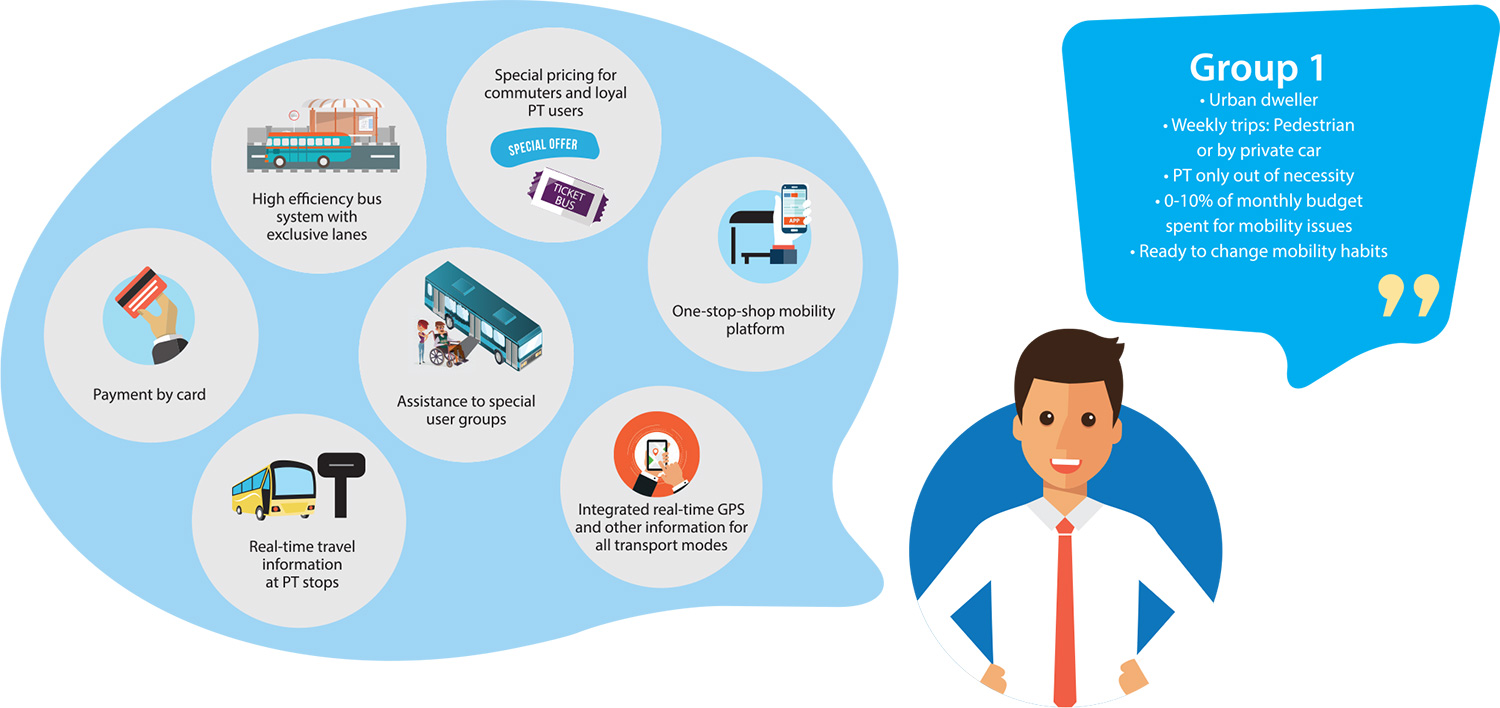You could consider applying advanced marketing research methods to investigate users’ preferences regarding certain attributes of a product/system/service that you would like to design and implement, or/and reveal hidden groups based on their preferences. Conjoint Analysis is the standard method for optimizing new products and services. In the case of innovative concepts, there is a need to support decision-makers with fresh knowledge as there is little evidence regarding their acceptability. Besides, this information is useful to customize new offers (according to the preferences), avoid costs (e.g. providing something without demand), and improve the appeal of the new services (to all or to certain target groups).
The Maximum Difference Scaling method (MaxDiff) is a preferential analysis method and an effective tool for encompassing large numbers of attributes. In CIPTEC, MaxDiff was applied to narrow down an initial long list of innovative concepts and solutions. This concise list of innovative concepts/solutions was then used as an input for the Conjoint Analysis to highlight the most preferred innovations in Public Transport.
By applying the Choice-Based Conjoint (CBC) method, you can investigate respondents’ preferences and reveal potential hidden user groups (segments) based on pertinent preferences. In addition, by using the Conjoint Analysis simulation, you will be able to examine alternative scenarios regarding respondents’ willingness to use Public Transport when particular attributes (e.g. innovative concepts) are suggested to be implemented either as stand-alone tools or in combination with each other.
Reveal hidden groups, understand better your customers!
Understanding the differences between what users like but also the factors that shape these preferences among users is of paramount importance in understanding which innovations can work for specific segments of the population.
By using the Conjoint Analysis method, you can explore what people really value in products and services, revealing the underlying drivers behind users’ choices.
As the segmentation analysis reveals, there are homogenous groups with different priorities and therefore different needs and driving factors. These groups don’t follow the dominant demographics patterns (e.g. age, gender), and remain hidden to the common analytics and mainstream approaches (hidden groups).
Mapping and appreciating these finer structures can open up the way to an improved customer-oriented service design, better tailored innovation strategies and roll-up to target these segments.
In CIPTEC, Conjoint Analysis was used to analyse preferences concerning eleven (11) selected existing innovative concepts.
Findings reinforce the underlying work hypothesis that EU users have different preferences when it comes to PT innovations.
From a practical standpoint, both differences and similarities among the present 7 groups could be utilised by the participants in order to effectively place their services to the appropriate target groups.
Seven (7) distinct groups/segments that demonstrate similar preferences with respect to their preferences in Public Transport innovations were identified.
We present the main attributes of the groups and the associated preferred innovations.



